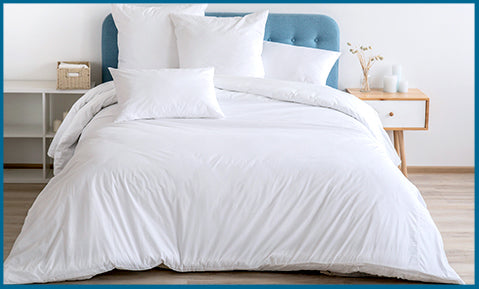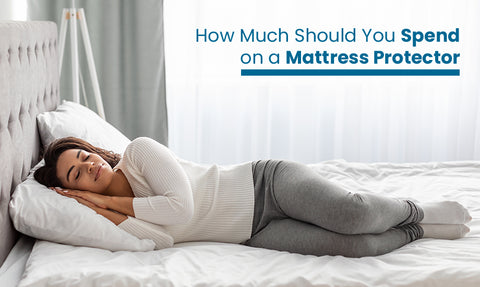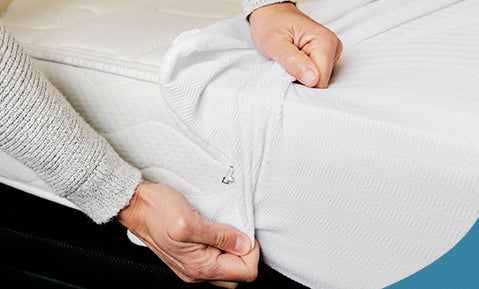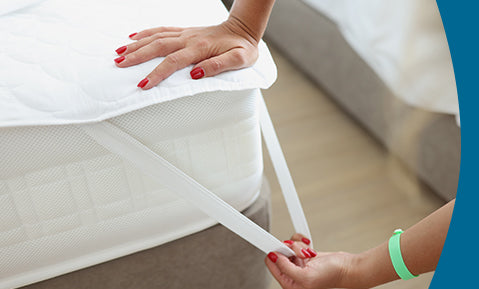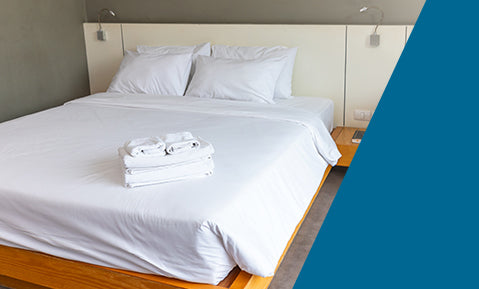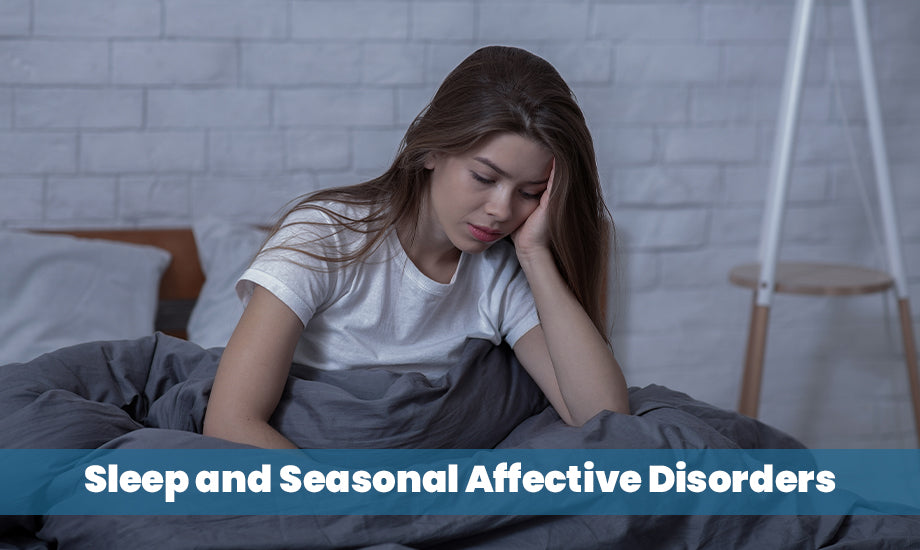
There are chances that your mood and health gets affected by less daylight hours and colder weather during winters. Seasonal affective disorder (SAD) involves more than just the "winter blues," even though many people report feeling less energized in the winter. Both your sleep and your daily life are impacted.
Seasonal Affective Disorder (SAD), which affects several individuals as the year comes to a close, may be difficult on the body, mind, and sleep. Fortunately, even if you've previously experienced the disease, these symptoms are simple to address.
Without any further ado, let us understand the symptoms of seasonal affective disorders and how it might affect your sleep.
What is Seasonal Affective Disorder?

SAD, commonly referred to as seasonal affective disorder or seasonal depression, is a mood illness that resembles depression.
While depression can strike at any moment for a variety of causes, SAD happens every year at the same time, usually in the fall and winter. Although both the winter blues and seasonal depression have the same signs of melancholy and exhaustion, seasonal depression can become so severe that it affects your day-to-day functioning.
It normally goes away when spring arrives within a few months, but this is still a long period to be constantly melancholy.
What Are the Symptoms of Seasonal Affective Disorder?

Early winter or late fall is usually when SAD symptoms first occur, and they normally last until the longer, sunnier days of spring and summer. People who have the reverse pattern may suffer symptoms in the spring or summer. In any case, symptoms could start out mild and get worse as the season progresses.
The symptoms and signs include –
- Feeling sluggish and lack energy
- Facing difficulty in concentrating
- Feelings of guilt, worthlessness and hopelessness
- Weight gain which is a result of overeating due to carbohydrate cravings
- Experiencing problems with sleeping too much
- Not enjoying things, you previously did
- Feeling down, sad and listless nearly the entire day
- Having suicidal thoughts
Bipolar Disorder and Seasonal Changes

It is more commonly seen that people with bipolar disorder develop the seasonal affective disorder. Some episodes of mania in some bipolar patients can be connected to a particular season. For instance, mania symptoms or a milder form of mania (hypomania), as well as anxiety, agitation, and impatience, may be brought on by the spring and summer months. In the fall and winter, they could experience depressive episodes as well. One can also experience periods of depression in the fall and winter.
What Causes of Seasonal Affective Disorder
Seasonal depression's specific etiology is unknown to researchers. If you are predisposed to the illness, a lack of sunlight may make it worse. The theories indicate.
- Change in your biological clock
As the amount of sunlight decreases, you will start to notice a change in your biological clock.. This internal clock is responsible for controlling your hormones, mood, and sleep. You can't adjust to changes in the length of the day when it moves since you're out of sync with your usual daily routine.
- Deficiency of vitamin D
Vitamin D also raises your serotonin levels. Since vitamin D is produced in part by sunlight, a lack of sunlight during the winter months might cause a vitamin D shortage. That alteration may have an effect on your mood and serotonin level.
- Imbalance in the brain chemicals
The brain uses neurotransmitters to connect with the nerves. One of these chemicals, serotonin, promotes happiness in people. Your serotonin levels may already be low if you are prone to SAD. Since sunshine regulates serotonin, its absence in the winter can make the issue worse. As a result of further decline in serotonin levels, depression might happen.
- Negative Thoughts
People who suffer from SAD frequently feel stressed, anxious, and depressed during the winter. These unfavorable thoughts may either be a cause or a result of seasonal depression, according to researchers.
- A boost in melatonin
Your sleeping patterns and emotions are influenced by a hormone known as melatonin. and sleeping patterns. In some persons, the lack of sunlight may encourage an excess production of melatonin. Feelings of lethargy and tiredness can persist in you during the winter.
What are the Risk Factors of ASD?
Seasonal affective disorder (SAD) is more likely to be experienced by women and young adults. In addition, you run a larger risk if you:
- Undergoing a different mental health condition, such as bipolar disorder or severe depressive disorder.
- Have family members that suffer from SAD, other types of depression, or mental Illnesses such as serious depression or schizophrenia.
- Reside far north or far south of the equator in latitude. At these latitudes, the amount of daylight decreases during the winter.
- Reside in a cloudy area.
How is Sleep Affected by SAD
You can have trouble sleeping if you have SAD. People who with SAD frequently experience extreme daytime sleepiness and sleep longer than usual at night. Research has shown that SAD patients sleep two hours longer or more each night in the winter than in the summer.
You might find it difficult to get up after a lengthy nap or feel the desire to take multiple naps throughout the day. Even so, taking a nap might not help you feel less sleepy.
Additionally, SAD sufferers frequently experience nightmares. One study indicated that compared to 2.4% of persons without SAD, 16% of participants with SAD experienced frequent nightmares.
A good night's sleep is crucial to your general well-being. It assists in keeping your emotions and mood in check. You're more prone to struggle with depression and anxiety if you don't get enough sleep.
How to Diagnose SAD
Your mood and behavior change with the year when you have SAD, which is its fundamental characteristic. It is a kind of major depression or bipolar disorder, often known as manic depression, rather than a distinct mood disease.
If any of the following have occurred within the past two years: Depression or mania that begins and ends during a certain season. However, do keep in mind that these symptoms weren't present during your "typical" seasons.
You've experienced more seasons of sadness or mania than not during your existence.
Since SAD can mirror other ailments like chronic fatigue syndrome, an underactive thyroid, low blood sugar, viral infections, or other mood disorders, it can occasionally take some time to diagnose.
How Can You Treat SAD?
You have a wide range of easily accessible solutions at your disposal to manage the symptoms of seasonal affective disorder and resume getting the restful sleep you require. Here are the top two recommended choices for treatment.
- Light Therapy
SAD is frequently and successfully treated with light therapy, commonly known as bright light therapy or phototherapy. Additionally, sleep issues, jet lag, and major depressive illness with a seasonal pattern are all treated with light treatment. By giving your body the essential light it lacks during the darker months with light therapy, you can help control your mood.
You expose oneself directly to an artificial light source during a light therapy session. However, you need to utilize lamps or light bulbs made expressly for light therapy for this to work. The advantages of sunlight can be enjoyed even when there isn't any thanks to these unique light sources that mimic natural light.
It is ideal to use light therapy first thing in the morning or as soon as you awaken. Most lightboxes or bulbs used for light treatment range in brightness from 2500 to 10000 lux; generally speaking, the higher the lux, the shorter your sessions should be. Sessions typically last ten to fifteen minutes.
The light must directly hit your eyes in order for your treatment to be effective—skin exposure is insufficient. However, avoid staring directly at the light. This might harm your eyes.
While the control group showed no improvement, the light therapy group showed a considerable improvement.
Even while persons who suffer from mental health illnesses or sleep disorders greatly benefit from light therapy, there is still a chance that the medication will cause temporary or mild negative effects. Some of these may consist of:
- Eyestrain
- Nausea
- Headache
- Irritability
- Try few relaxation techniques before going to bed
You may unwind and relieve tension by using easy relaxation techniques. They are also really helpful for getting a good night's sleep. Other advantages of relaxing techniques include:
- Better mood
- Fewer pains or stress in the muscles
- Blood pressure is lower
- Improved intestinal function
A few relaxation techniques are –
- Yoga: Yoga is excellent for developing mindfulness and a stronger connection to your body.
- Meditation: During meditation, you can "pause" the external environment and reach a calm, peaceful state of mind.
- Breathing techniques: Everyone is aware of the relaxing effects of a deep breath. This goes a step further by repeatedly taking deep, relaxing breaths to help you unwind, clear your mind, and encourage sleep.
When should you Seek Help?

Keep in mind that it's normal to occasionally feel down, especially during the winter. You could still experience sadness, hopelessness, or overwhelming feelings while receiving therapy for winter depression or a mental condition. However, it's critical to realize that you are not alone, and that assistance is always available. Consult your doctor or a mental health expert if you still experience symptoms of SAD, sadness, anxiety, or bipolar disorder. Although seasonal affective disorder (SAD), a prevalent mood illness, might disrupt your life and sleep, it doesn't have to. If you have the winter blues every year, consider these remedies.

